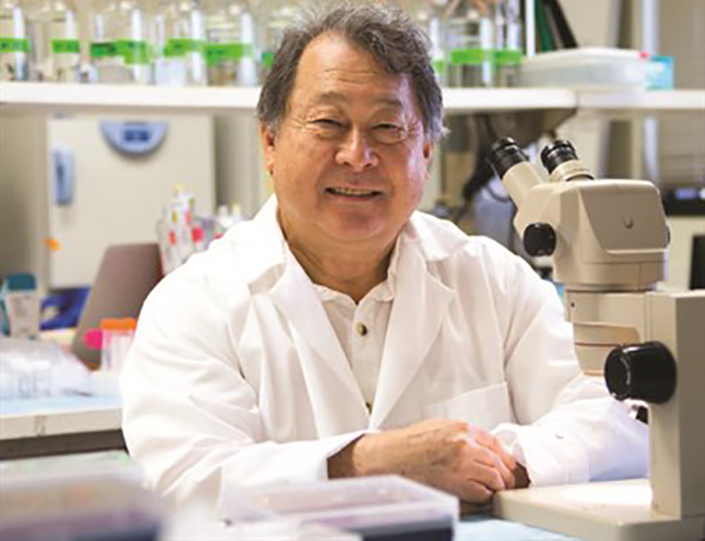Regeneration of joints in mammals may be possible, research indicates

Research by College of Veterinary Medicine & Biomedical Sciences professor Ken Muneoka and his colleagues has opened the doors to the possibility of regenerating joints in mammals.
His study, “BMP9 stimulates joint regeneration at digit amputation wounds in mice,” published Feb. 5 in Nature Communications, expands on previous research conducted by his laboratory showing that the treatment of digit amputation wounds in mice with a growth factor, called bone morphogenetic protein BMP-2, promotes elongation of the stump bone.
In that study, however, the joint and additional skeletal elements were not regenerated.
Now, Muneoka’s team has devised a method to stimulate joint regeneration following injury in mice using a combination of growth factors.
That growth factor, BMP-9, stimulates the formation of joint structures comprising a synovial cavity and a skeletal element lined with articular cartilage, while the sequential treatment of the wound with BMP-2 and BMP-9 leads to the formation of bone and joint cells.
The authors found that the process also requires cells to express the Prg4 gene to initiate the formation of the synovial cavity.
Unlike amphibians and reptiles, mammals have poor regenerative capabilities, and in response to an amputation or traumatic injury, scar tissue normally forms at the site of the wound.
The authors argue that the results provide evidence that cells in a mammalian amputation wound retain the capacity and information for joint regeneration.
“We have been working on this project for nine years, and there are really two different levels that we can talk about with the study,” Muneoka said. “The first is really a basic science issue; it’s the question of why some animals regenerate and some can’t. For example, salamanders regenerate wonderfully, but mammals, for reasons we don’t understand, don’t regenerate it all.
“There’s this basic idea that regeneration is really an ancient property that evolved very early and then disappeared in some animals and has been regained in some animals,” he said. “There’s good evidence that there is selective pressure to gain or lose regeneration.”
“The other level, which is more clinically relevant, is that joints and joint tissues don’t regenerate, nor does articular cartilage, which forms at the ends of your bones and buffers the stress that we experience on a day-to-day basis. Joint injuries, sports injuries, or diseases like osteoarthritis, are really debilitating; I think they are the biggest cause of disability in the world,” he continued. “The question of how you can replace articular cartilage is in the backdrop of what we’ve been working on, which is what we’re able to regenerate in this process. It really demonstrates that these cells have the ability to replace themselves and we just haven’t figured out how to do that.”

